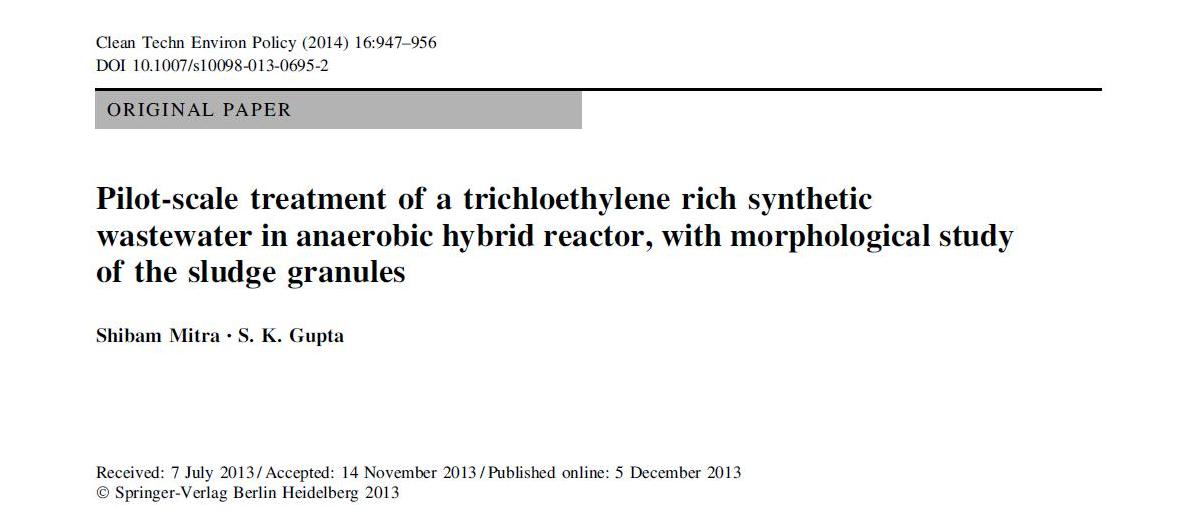Description :

Abstract
A pilot-scale research was conducted to study the biodegradation of trichloroethylene (TCE) in anaerobic hybrid reactor (AHR). At an influent TCE and COD concentrations of 50 and 2,000 mg/l, respectively, theAHRshowed a maximum 99.93 ± 0.13 and 97.81 ± 0.42 % of TCE and COD removals, respectively, at 24 h of hydraulic retention time. The flocculent sludge (<0.5 mm diameter in size) was gradually converted to compact granular sludge (>2 mm diameter in size) after the completion of the acclimatization study. The biomass growth yield, the maximum substrate (COD), and the maximumco-substrate (TCE) utilization rates were found to be 0.05 mgVSS/mgCOD/day, 0.526 mgCOD/ mg VSS/day, and 0.0125 mg TCE/mgVSS/day, respectively. The AHR has the high potentiality for the treatment of high concentration of TCE present in some industrial wastewater.
 Pilot-scale treatment of a trichloethylene rich synthetic wastewater in anaerobic hybrid reactor, with morphological study of the sludge granules
Pilot-scale treatment of a trichloethylene rich synthetic wastewater in anaerobic hybrid reactor, with morphological study of the sludge granules